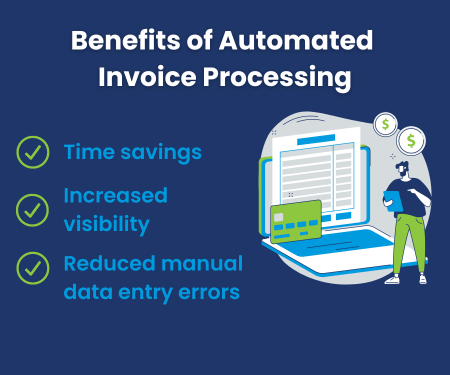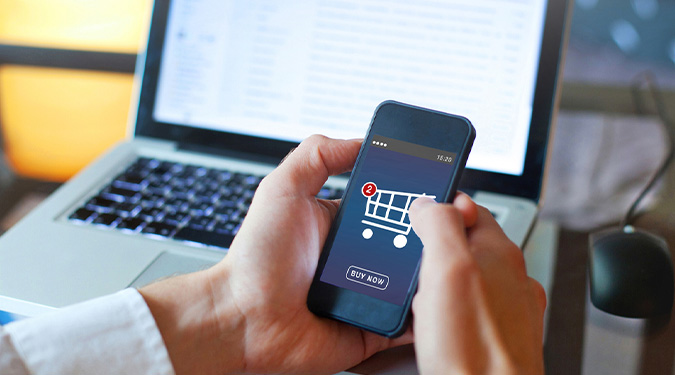Table of Contents
In today’s fast-paced business landscape, efficiency and accuracy are paramount. Manual tasks can often be a bottleneck, consuming valuable time and resources. Strategic businesses are increasingly recognizing the benefits of implementing automation within various aspects of the B2B transaction process, including invoicing. They are achieving this through automated invoice processing software otherwise known as electronic invoices.
In this comprehensive guide, we’ll delve deeper into the concept of automated invoice processing, exploring its mechanics, multifaceted benefits, and the compelling reasons why it’s an imperative asset for modern businesses.
Understanding Automated Invoice Processing
At its core, automated invoice processing leverages cutting-edge technology to optimize and streamline the entire invoicing workflow, encompassing every step from the initial receipt of invoices to their ultimate approval and subsequent payment.
The heart of this technology lies in its ability to seamlessly translate and transfer supplier invoice data into the buyer’s eProcurement systems. Automated invoice processing software ensures that the invoice data undergoes meticulous validation, formatting, and preparation, rendering it ready for effortless reconciliation and smooth payment processing.
This approach fundamentally eradicates the need for manual data entry and the often error-prone, repetitive tasks that accompany it. Consequently, this leads to a marked reduction in errors and a significant acceleration of the entire invoicing process.
Benefits of Automated Invoice Processing Software

The advantages of automated invoice processing extend to both buyers and suppliers, fostering a mutually beneficial ecosystem that enhances efficiency, accuracy, and collaboration.
Benefits for Buyers
- Streamlined 3-Way Matching: By seamlessly integrating with PO Automation, automated invoice processing enhances the efficiency of the 3-way matching process between purchase orders, invoices, and order receipts. This integration results in reduced reconciliation processing times, cost savings, and a notable reduction in inaccuracies such as manual data entry errors.
- Operational Cost Reduction: One of the most evident advantages for buyers is the reduction in accounts payable (AP) personnel expenses. Invoice automation substantially minimizes the need for manual invoice processing and data entry within the buyer’s systems, freeing up valuable human resources for more strategic tasks.
- Enhanced Supplier Relationships: Timely and punctual invoice payments foster stronger supplier relationships. By consistently meeting payment deadlines, buyers establish themselves as reliable and dependable partners, potentially leading to more favorable terms, collaborations and a stronger automated invoice processing system.
Benefits for Suppliers
- Efficient Approval Routing: Suppliers can significantly reduce outstanding accounts receivable (AR) by electronically delivering invoices to customers in formats that seamlessly integrate with their internal systems. This ensures swift internal routing for approval, minimizing delays and facilitating faster payment cycles.
- Streamlined 3-Way Matching: Just as buyers benefit from this aspect, suppliers can also enjoy improved payment efficiency through the fine-tuning of the 3-way matching process between requisitions, purchase orders, and invoices. This optimization, achieved through integration with PO Automation, expedites payment processing.
- Business Growth Opportunities: Suppliers can extend their revenue potential by leveraging invoice automation processing as a value-added service. This technology not only caters to existing clients’ needs but also entices larger customers and new business opportunities, ultimately contributing to business expansion.
How Automated Invoice Processing Works
The mechanics of automated invoice processing are elegantly simple yet impactful. The process begins when a supplier’s system generates an invoice upon the completion or shipment of a transaction. Subsequently, automated invoice processing extracts invoice data from the supplier’s eCommerce, Enterprise Resource Planning (ERP), or other order management systems.
This extracted data is then seamlessly translated into a format that aligns with the buyer’s preferred invoice delivery requirements. The transformed invoice version is directly delivered to the buyer’s eProcurement or ERP system, where it undergoes the necessary approval routing and is prepared for payment.
Invoice Automation Solution in the B2B Transaction Process
- PunchOut: Buyer selects a supplier within the eProcurement system, is routed to the supplier’s eCommerce site to shop, then transfers the cart data back to their purchasing system. Order details are then routed by eProcurement for the appropriate approvals.
- Purchase Order (PO) Automation: A PO is generated in the eProcurement system, then the buyer sends the PO from the eProcurement system to the supplier in a data format that can be ingested by suppliers’ systems.
- Purchase Order (PO) Acknowledgement: Once the request is received by the supplier, a POA is generated with order details confirming that the PO was received and is sent back to the Buyer’s systems.
- Advanced Shipping Notice (ASN): The supplier’s eCommerce system will send the buyer an ASN containing additional shipment and tracking information in a format that can be automatically accepted into the Buyer’s systems.
- Automated Invoice Processing: Once a transaction is shipped or completed, the supplier’s system will generate an invoice to send to the buyer in a data format that can be automatically read by the buyer’s systems.
- eQuote: Buyer accesses an electronic quote for a special order in an intuitive interface and then transfers the quote to their eProcurement platform.
Conclusion
In the ever-evolving realm of modern business, staying competitive requires a commitment to innovation and efficiency. Automated invoice processing stands as a transformative solution that empowers businesses to streamline their financial operations, reduce costs, minimize errors, and foster stronger relationships with both suppliers and buyers.
The advantages are far-reaching, from quicker payment cycles and enhanced 3-way matching to reduced manual processing and the potential for attracting new customers. Automate invoice processing and discover how much time your team could save.
By embracing invoice automation software, businesses can position themselves for growth, channel their resources more strategically, and focus on the core initiatives that propel them toward success in the digital age.
Those who embrace an automated invoice processing solution will help support business growth in the future.




